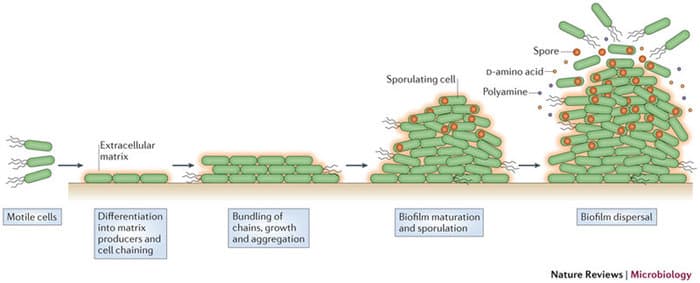Newly Made Sensors Counter Multiplication of Bacteria in Humid Conditions
Aitor Urrutia and his team from the Universidad Pública de Navarra (UPNA) at Spain have developed an antibacterial humidity sensor that inhibits micro-bacterial proliferation in highly humid regions. This reproductive escalation of bacteria over a surface in a highly humid environment, scientifically dubbed as “biofilms†is the underlying principle behind humidity sensors, as reported by the team. Urrutia presented his thesis on this innovation and was awarded the PhD degree with distinction grade "cum laudeâ€, and the scientific paper was published in the American Association for the Advancement of Science (AAAS).

Aitor Urrutia
Biofilms give birth to biofouling conditions which signifies degradation of food, chemicals and other soft utilities due to bacterial growth. Considering the widespread problem, Aitor proposed to develop humidity sensors that would have antibacterial properties which functions in a bacteria-philic, humid environment. To develop different humidity sensors, the team combined latest advances in nanotechnology with new findings in the field of fibre optics.

Biofilm development on a surface
The developed sensor comprises of an optical structure, on which coating of silver nanoparticles are deposited. This improves two aspects of the module, namely antibacterial properties and sensitivity, leading to better service and a longer life-span. Additionally, as claimed by Urrutia the sensor sports biocompatibility, immunity to electromagnetic interference, has low cost, small size and is lightweight.
This new sensor could be incorporated in various sectors, including food processing, pharmaceutical industry, in biotechnology and home automation. It can also be used in monitoring cavities and structures that are difficult to access.
Watch a relevant lecture on biofouling and microbial control conducted by National Water Research institute -
Source: #-Link-Snipped-#) | #-Link-Snipped-#

Aitor Urrutia
Biofilms give birth to biofouling conditions which signifies degradation of food, chemicals and other soft utilities due to bacterial growth. Considering the widespread problem, Aitor proposed to develop humidity sensors that would have antibacterial properties which functions in a bacteria-philic, humid environment. To develop different humidity sensors, the team combined latest advances in nanotechnology with new findings in the field of fibre optics.

Biofilm development on a surface
The developed sensor comprises of an optical structure, on which coating of silver nanoparticles are deposited. This improves two aspects of the module, namely antibacterial properties and sensitivity, leading to better service and a longer life-span. Additionally, as claimed by Urrutia the sensor sports biocompatibility, immunity to electromagnetic interference, has low cost, small size and is lightweight.
This new sensor could be incorporated in various sectors, including food processing, pharmaceutical industry, in biotechnology and home automation. It can also be used in monitoring cavities and structures that are difficult to access.
Watch a relevant lecture on biofouling and microbial control conducted by National Water Research institute -
Source: #-Link-Snipped-#) | #-Link-Snipped-#
0

